The International Police Training & Assistance section contains online resources for international law enforcement professionals involved in global police training and assistance projects. Note: The section is regularly updated with additional materials.
Disclaimer: The Wellington Global Security Guide is not responsible for any errors or omissions, or for the results obtained from the use of the information contained on this website. All information on this site is provided “as is”, with no guarantee of completeness, accuracy, timeliness or of the results obtained from the use of this information. Any action you take based on the contents of this website is strictly “at your own risk”.
Resources
International Program Planning & Assessment Materials
“INL Guide to Police Assistance” by the U.S. Department of State, Bureau of International Narcotics and Law Enforcement Affairs, 2016. This report provides INL guidance on the development and management of international police assistance projects. An excellent reference for law enforcement professionals involved in such endeavors. Link: INL Guide to Police Assistance
“Guide for Democratic Policing”. Published by the Organization for Security Co-Operation in Europe, 2008. This is a very useful 46-page guide on democratic policing from the European perspective. It would be a useful resource for international police assistance projects. Link. OSCE DemPolGuide
“Democratizing the Police Abroad: What to Do and How to Do It” by David H. Bayley. Published by the U.S. Department of Justice, 2001. Although published a number of years ago, this report sets out many principles of democratic policing which are still utilized today. It is an excellent reference for those involved in international police assistance. Link: Democratic Policing Abroad
“International Human Rights Standards for Law Enforcement: A Pocket Book on Human Rights for the Police”. Published by U.N. High Commissioner for Human Rights, undated. This 31-page pocket book contains a description of the international human rights standards regarding policing. As such, it is a valuable reference for all international police assistance projects. Link. U.N Human Rights Standards for Police
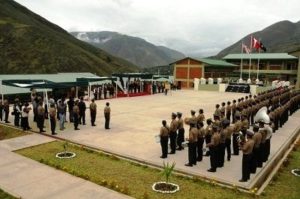 “A Field Guide for USAID Democracy and Governance Officers: Assistance to Civilian Law Enforcement in Developing Countries”. Published by the U.S. Agency for International Development, 2011. This is an excellent, very useful guide for international police assistance professionals. Link: USAID Assistance to Civilian Law Enforcement in Developing Countries
“A Field Guide for USAID Democracy and Governance Officers: Assistance to Civilian Law Enforcement in Developing Countries”. Published by the U.S. Agency for International Development, 2011. This is an excellent, very useful guide for international police assistance professionals. Link: USAID Assistance to Civilian Law Enforcement in Developing Countries
“Public Safety and Police Service Delivery: Criminal Justice Assessment Toolkit. No. 1”. Published by the U.N Office on Drugs and Crime, 2006. This resource provides an excellent set of tools to assess the police role in international police projects. Link: UN Public Safety and Police Service
“The Integrity and Accountability of the Police: Criminal Justice Assessment Toolkit. No. 2”. Published by the U.N. Office on Drugs and Crime, 2006. This resource provides an excellent set of tools to assess police agency integrity and accountability. Very useful for international police assistance professionals. Link: UN Integrity and Accountability of Police
“Crime Investigation: Criminal Justice Assessment Toolkit. No. 3”. Published by the U.N. Office on Drugs and Crime, 2006. This resource provides an excellent set of tools to assess the police criminal investigation capability. Very useful for international police assistance professionals. Link: UN Criminal Investigation
“Police Information and Intelligence Systems: Criminal Justice Assessment Toolkit. No. 4”. Published by the U.N. Office on Drugs and Crime, 2006. This resource provides an excellent set of tools to assess the police information and intelligence system in a client country. Very useful for international police assistance professionals. Link: UN Police Information and Intelligence
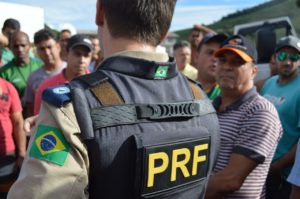 “Crime Prevention Assessment Tool: Criminal Justice Assessment Toolkit. No. 5”. Published by the U.N. Office on Drugs and Crime, 2006. This resource provides an excellent set of tools to assess police crime prevention program in a client country. Very useful for international police assistance professionals. Link: UN Crime Prevention Assessment
“Crime Prevention Assessment Tool: Criminal Justice Assessment Toolkit. No. 5”. Published by the U.N. Office on Drugs and Crime, 2006. This resource provides an excellent set of tools to assess police crime prevention program in a client country. Very useful for international police assistance professionals. Link: UN Crime Prevention Assessment
“Introductory Handbook on Policing Urban Space”. Published by the U.N. Office on Drugs and Crime, 2011. This handbook provides an excellent detailed set of tools and guidelines for policing in urban environments. Very useful for international police assistance professionals. Link: UN Handbook on Policing Urban Space
“Guidance on the Preparation and Use of Serious and Organized Crime Threat Assessments: The SOCTA Handbook“. Published by the U.N. Office on Drugs and Crime, 2010. This handbook provides a very useful, detailed set of tools and guidelines for assessing the threat of serious and organized crime in developing countries. It is an excellent resource for international police assistance professionals. Link: U.N. Serious and Organized Crime Handbook
General Policing Materials
Community Policing Resources
“Lessons to Advance Community Policing”. by Vivian Elliot and Tammy Felix. Published by the U.S. Department of Justice, 2018. This is a very good, 68-page, “best practice” type study that provides case studies of award winning community policing initiatives. Link. DOJ Lessons to Advance Community Policing
“Community Policing Defined”. Published by the U.S. Department of Justice, 2014 (Revised). This 16-page publication contains an excellent overview of Community Oriented Policing. It contains a large number of informative graphics and could serve as a good go-by for developing informational materials for an international policing project. Link. Community Policing Defined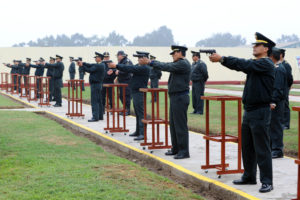
“Community Policing: The Past, Present and Future”, by Lorie Fridell and Mary Ann Wycoff. Published by the Police Executive Research Forum (PERF), 2004. This is an excellent 251-page, foundation document on community policing and provides an excellent overview for international police assistance project planners. Link. PERF Community Policing
“Community Policing: Principles and Elements”, by Gary Gordner, Eastern Kentucky University, USDOJ Sponsored Project, 1996. This is a very good and concise (11-page) look back at the beginnings of Community Oriented Policing. Would be a good concise resource document for international policing professionals. Link. COPSPrinciplesElements
“Community Policing Explained: A Guide for Local Governments” by Gayle Fisher-Stewart, PhD. Published by the USDOJ and the International City/County Management Association (ICMA), 2007. This is an excellent 54-page report on Community Policing for local government officials. It would be a very good resource document for international policing projects. Link. COPSExplained
Police Anti-Corruption and Integrity
“Effectiveness of Police Accountability Mechanisms”. Published by the U.S. Agency for International Development, 2016. This is an excellent examination of the difficulties in developing effective police accountability mechanisms in international police assistance projects. Very useful for international police assistance professionals. Link: USAID Effectiveness of Police Accountability Mechanisms
“USAID Program Brief: Anticorruption and Police Integrity”. Published by the U.S. Agency for International Development, 2007. This resource provides and excellent overview of police corruption and the difficulty of establishing effective anticorruption programs. It offers practical suggestions and includes very useful case studies to add real world context to the discussion. Very useful for international police assistance professionals. Link: USAID Anticorruption and Police Integrity
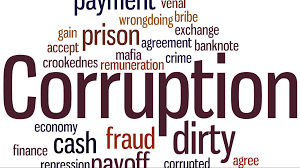 “INL Guide to Anticorruption Policy and Programming”. Published by the U.S. State Department’s, Bureau of International Narcotics and Law Enforcement Affairs (INL), 2015. This is a 48-page overview and guide of INL’s anti-corruption policy and planning process. A good reference resource for international police development professionals. Link. INL Guide to Anticorruption Projects
“INL Guide to Anticorruption Policy and Programming”. Published by the U.S. State Department’s, Bureau of International Narcotics and Law Enforcement Affairs (INL), 2015. This is a 48-page overview and guide of INL’s anti-corruption policy and planning process. A good reference resource for international police development professionals. Link. INL Guide to Anticorruption Projects
“Handbook on Police Accountability, Oversight and Integrity”. Published by the United Nations (UNODC), 2011. This is a very good, 150-page, detailed guide on the development of effective police accountability, oversigh and integrity programs. A good resource for international police development professionals. Link. UN Handbook Police Account/Integrity
“Standards and Guidelines for Internal Affairs: Recommendations from a Community of Practice”. Published by the U.S. Department of Justice, 2003. This is an excellent 80-page guide for the development of a police internal affairs process. It could be helpful for international police assistance professionals. Link. DOJ Guidelines for Police Internal Affairs
Investigative Resources
“Law Enforcement Investigations” published by the U.S. Army, 2013. This is a detailed U.S. Army manual on law enforcement investigations (ATP 3-39.12). Although the sections on the military legal requirements differ from U.S. civil justice system, the detailed technical guidance provided would be very useful for international law enforcement (criminal investigative) development projects. Link. U.S. Army InvManual
“Promising Strategies for Strengthening Homicide Investigations: Findings and Recommendations from the Bureau of Justice Assistance’s Homicide Investigations Enhancement Training and Technical Assistance Project”. Published by the U.S. Department of Justice, 2018. This is an excellent, 156-page, “best practices” manual on what works in homicide investigations. Many of the best practices are also applicable (with appropriate modification) for other types of complex investigations. A good resource for international police development professionals. Link. USDOJ-Strategies Strengthening Homicide Invest.
“Investigative Uses of Technology: Devices, Tools, and Techniques” published by the U.S. Department of Justice, 2007. This is an excellent resource that contains detailed guidance on the investigative use of technology by law enforcement agencies. Link. Investigative Use of Tech
“Electronic Crime Scene Investigation: A Guide for First Responders”. Published by the U.S. Department of Justice, 2nd Ed., 2008. Although published a number of years ago, this report provides a good basic guide to police electronic crime scene investigations. Could be a useful resource for international police assistance professionals. Link. DOJ Electronic Crime Scene Invest
“Crime Scene Investigation: A Guide for Law Enforcement”, published by the National Forensic Science Technology Center, 2013. This excellent guide provides guidance on crime scene investigation. It is a valuable resource tool for those developing international police assistance projects. Link. CrimeSceneInv
Police Intelligence Resources
“Intelligence Analysis for Problem Solvers” by John E. Eck and Ronald V. Clarke, et. al.. Published by U.S. Department of Justice, 2013. This is a detailed report on how to use intelligence analysis to combat crime. It is a very good resource for use by international policing professionals tasked with developing an intelligence analysis capability for client police agencies. Link. Intel Analysis for Prob Solvers
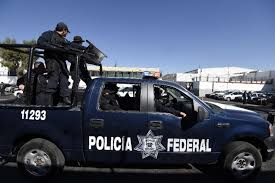
“Law Enforcement Intelligence: A Guide for State, Local, and Tribal Law Enforcement Agencies, 2nd ed.”, by David L. Carter. Published by the U.S. Department of Justice, 2009. This is a comprehensive and extremely useful 496-page guide to establishing an effective police intelligence capability. Although developed for U.S. law enforcement, much of the guide would be useful for international policing projects with appropriate modifications for local context. Link. Law Enforcement Intelligence Guide
“Reducing Crime Through Intelligence Led Policing” published by the U.S. Department of Justice, 2008. This is a detailed report on methods for reducing crime via the use of intelligence led policing. It contains a number of case studies which are useful as best practice options. Link. Reducing Crime Thru Intelligence Led Policing
“Practical Guide to Intelligence-Led Policing” published by the New Jersey State Police, 2006. This guide provides a useful “go by” for international police professionals tasked with developing a police intelligence capability for their foreign client police agencies. Link. NJSP Guide to Intel Led Policing
“Fusion Center Guidelines Developing and Sharing Information and Intelligence in a New Era: Guidelines for Establishing and Operating Fusion Centers at the Local, State, and Federal Levels” published by the U.S. Department of Justice, 2008. This detailed manual provides guidance on the development of police intelligence fusion centers. It is an excellent resource for international police professionals. Link. FusionCntrGuidelines
“Enhancing the Problem-Solving Capacity of Crime Analysis Units”, by Matthew P. White. Published by the U.S. Department of Justice, 2008. This 48-page guide describes methods for improving the effectiveness of crime analysis units in police departments. It would be a useful resource fro both crime analysis and police intelligence units. Link. COPS Enhancing Crime Analysis
Gang Enforcement Resources
“Urban Street Gang Enforcement”. Published by the U.S. Department of Justice, 1997. Although published a number of years ago, this is an excellent overview for the establishment a basic gang enforcement unit. It would be useful for international policing projects in underdeveloped countries with limited resources. Link. UrbanStreetGangManual
“Guidelines for Establishing and Operating Gang Intelligence Units and Task Forces”. Published by the U.S. Department of Justice, 2008. This is a very good 50-page guide on recommendations for creating a gang intelligence unit. Although based on U.S. policing it does offer a structure for creating a unit in a unit in an underdeveloped country (by modifying the structure to consider local context and resources. Link. GangIntelUnitGuide
“Preventing Gang and Drug-Related Witness Intimidation”. Published by the U.S. Department of Justice, 1996. This is a 155-page manual which discusses the problem of witness intimidation and describes the process for developing a comprehensive witness protection program. It would be useful in a broad range of international policing projects. Link. WitnessProtectionProgram
“Gang Prosecution Manual”. Published by the U.S. Department of Justice, 2009. This 121-page manual is a guide for police and prosecutors pursuing gang-related criminal cases. Although specific to the U.S. criminal justice system, it contains a wide variety of procedures that could be applicable to other justice systems and international policing projects. Link. GangProsecutionManual
Police Administration Resources
“Identifying and Defining Policing Problems”, by Michael S. Scott. Published by the U.S. Department of Justice, 2015. This 88-page report describes the Problem Oriented Policing method for developing anti-crime measures. It is an excellent reference for international police development professionals. Link. Identifying Police Problems
“Implementing POP: Leading, Structuring, and Managing a Problem-Oriented Police Agency”, by Michael S. Scott and Stuart Kirby. Published by the U.S. Department of Justice, 2012. This 92-page report describes a process for creating a problem-oriented police department. It would be very useful for international police development projects. Link. Developing a Problem Oriented Policing Agency
“Assessing Responses to Problems: Did It Work? An Introduction for Police Problem-Solvers, 2nd ed.”, John E. Eck. Published by the U.S. Department of Justice, 2017. This is an excellent, detailed- guide for police problem solvers and provides extensive background and current information on problem oriented policing. It is an excellent resource for international police development professionals. Link. AssessingPolice Problems
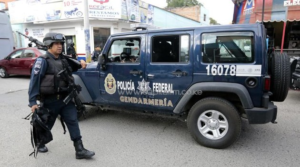
“Core Competencies Program Standards Manual , ed. 1.03”, published by the Commission for Florida Law Enforcement Accreditation, 2019. This is an excellent 122-page manual that details the law enforcement agency accreditation standards and process for the State of Florida. Would be a very useful resource for international police development professionals. Link. FLA Law Enf Accreditation – CORE Manual Edition – 2019
“Louisville Metro Police Department: Standard Operating Procedures Manual”, published by the Louisville, KY Metro Police Department, 2016 (updated). This is a very good copy of a comprehensive police department SOP Manual. It would be a good SOP formatting “go-by” resource for international police development projects. Link. Louisville Police SOP Manual
“Police Chiefs Desk Reference: A Guide for Newly Appointed Police Leaders, 2nd ed”. Published by the U.S. Department of Justice and the International Association of Chiefs of Police, 2008. This 322-page guide for new police leaders is an excellent resource for international police development professionals. DOJ/IACP Police Chiefs Desk Reference
“COMPSTAT: Its Origins, Evolution, and Future in Law Enforcement Agencies”, published by the Police Executive Research Forum and the U.S. Department of Justice, 2013. This report provides a concise overview of the COMPSTAT process for managing police agencies. It is a good source document for international police development professionals. Link. PERFCOMSTAT-Rpt
“Crime Analysis for Problem Solvers in 60 Small Steps”, by Ronald V. Clarke & John E. Eck. Published by the U.S. Department of Justice, 2005. This is an excellent overview of the uses of crime analysis in problem oriented policing. A valuable resource for international police professionals. Link. CrimeAnalysis
“Street Robbery”, by K. M. Monk, J. A. Heinonen and J. E. Eck. Published by the U.S. Department of Justice, 2010. The is a detailed study of Street Robbery conducted for the USDOJ as part of its Problem Oriented Policing Program. It is an excellent study of the crime incident model and its applicability to the problem of street robbery. Link. Street Robbery
“Tactical Response and Operations Standard for Law Enforcement Agencies”. Published by the National Tactical Officer’s Association (U.S.), 2018. This is a 48-page standards manual for tactical operations published by the leading tactical operations (e.g. SWAT) organization in the U.S. As many international policing projects take place in high crime/violence areas, the development of local police teams capable of effective tactical operations is a priority. This document provides a good outline of the requirements for such teams. Link. Tactical Operations Standards Manual
“Managing Large-Scale Security Events: A Planning Primer for Local Law Enforcement Agencies”. Published by the U.S. Department of Justice, 2013. This is a 225-page manual of guidelines and suggestions for police planners preparing for the management of large security events. Would be a very helpful resource for international police professionals tasked with assisting their local counterparts with the planning effort. Link. DOJ Mg Large Security Events


